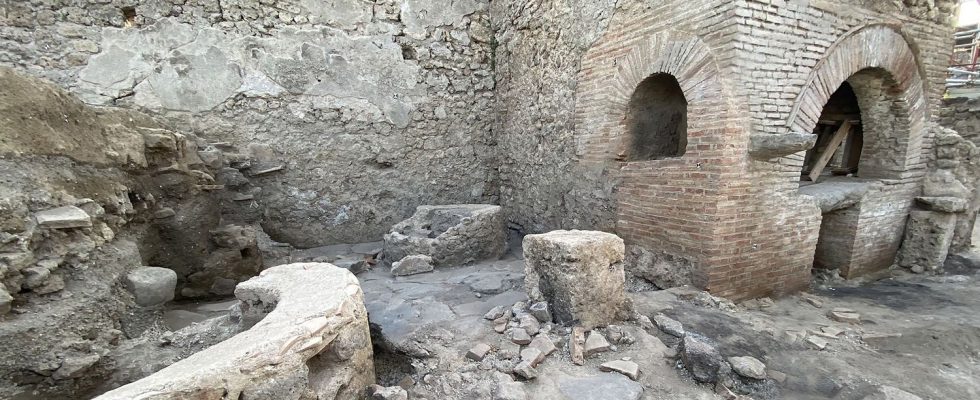Two thousand years ago, in Pompeii (Italy), slaves and donkeys were locked up to grind grain to produce bread, archaeologists have concluded after unearthing what they call a “prison bakery “.
Published
Reading time: 1 min

Slaves locked up with blindfolded donkeys: in the ancient city of Pompei (near Naples, Italy), destroyed in the year 79 by the eruption of Vesuvius, archaeologists discovered during excavations in a house “a narrow room with no outside view, with small windows with iron bars to let in light“This is what the site announced in a press release on Saturday.
The house, currently being renovated, was “divided – as is often the case – into a residential area decorated with refined frescoes and a production area intended here for bread making“, adds the press release. In one of the rooms of the bakery, three skeletons had already been found in recent months, confirming that the house was inhabited.
Slaves to produce bread
The archaeologists concluded that they had unearthed a “prison bakery, where slaves and donkeys were locked up and exploited to grind the grain needed to produce bread“. The research also revealed the presence of “engravings on the ground to coordinate the movement of the animals, forced to turn for hours blindfolded“.

“We must imagine the presence of people with servile status whose owner felt the need to restrict their freedom of movement“, underlined the director of the Pompeii site Gabriel Zuchtriegel in a scientific article.
“This is the most shocking aspect of ancient slavery, one devoid of both relationships of trust and promises of freedom, where one was reduced to brutal violence, an impression fully confirmed by the securing of windows with iron bars.“
The volcanic ash spewed out 2,000 years ago by Vesuvius settled on most of the homes in Pompeii, allowing them to be almost completely preserved, as were many of the bodies of the 3,000 deaths caused by the disaster. Listed as a UNESCO World Heritage Site, Pompei is the second most visited tourist destination in Italy after the Colosseum in Rome.
